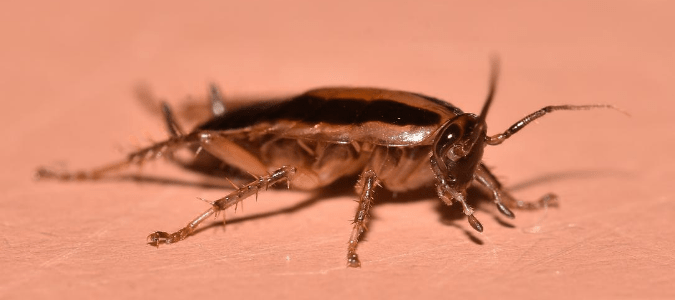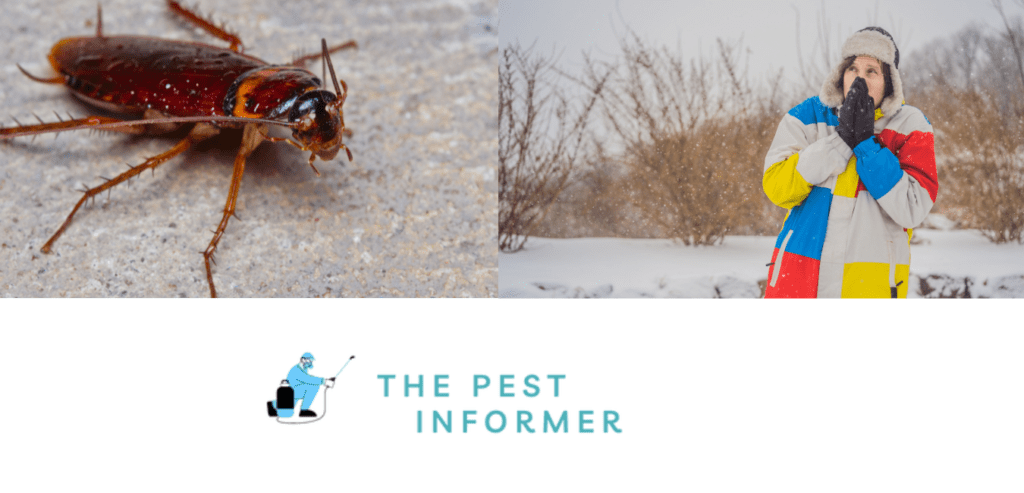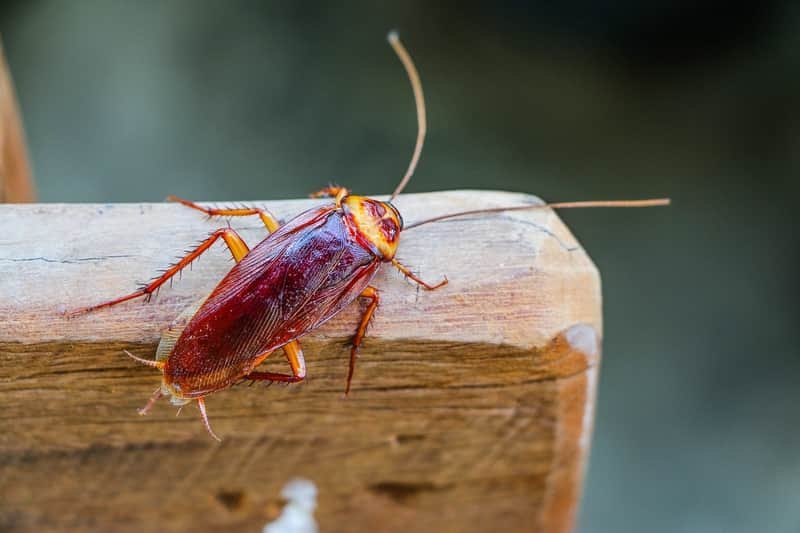Have you ever wondered if those pesky roaches will come back after you’ve had your home exterminated? Well, you’re not alone! In this article, we’ll explore the lingering question of whether or not roaches have a knack for returning, even after you think you’ve gotten rid of them for good. So, grab a cup of tea and prepare to uncover the truth about these resilient critters.


Factors that Affect Roach Infestations
Environment
The environment plays a significant role in determining the likelihood of a roach infestation. Roaches thrive in warm and humid areas, so if your surroundings provide these conditions, you may be more susceptible to an infestation. Additionally, cluttered spaces create hiding spots and make it easier for roaches to multiply unnoticed.
Access Points
Roaches can enter your home through various access points. Small cracks and crevices in walls, windows, and doors can serve as entryways for these pests. It is essential to seal any gaps and repair any damages to prevent roaches from invading your living spaces.
Food Sources
Roaches are attracted to food sources, especially those left out in the open or not properly stored. Crumbs, food spills, and even pet food can attract these pests. It’s crucial to keep your kitchen clean and promptly clean up any food debris to deter roaches from becoming a problem.
Water Sources
Just like humans, roaches need water to survive. They are particularly drawn to damp areas such as leaking pipes and faucets. It’s important to fix any plumbing issues and ensure that your home remains dry to make it less favorable for roaches to inhabit.
Types of Roach Extermination
Chemical Extermination
Chemical extermination is a common method used to eliminate roach infestations. It involves the use of insecticides, sprays, and baits specifically formulated to target roaches. These products are designed to kill roaches on contact or once ingested, effectively eradicating the infestation. However, caution should be exercised when using chemical extermination methods, as they may be harmful to humans and pets if not used correctly.
Natural Extermination Methods
For those who prefer a more environmentally friendly approach, natural extermination methods can be effective in controlling roach infestations. These methods include using natural repellents like essential oils, diatomaceous earth, and boric acid. While these methods may take longer to see results, they offer a safer alternative and can be particularly useful in homes with children or pets.
Professional Extermination Services
In some cases, a roach infestation may be too severe or persistent to tackle on your own. This is where professional extermination services come in. Pest control professionals are trained to identify the extent of the infestation and employ the most appropriate methods to eradicate the roaches. They have access to specialized equipment and knowledge to ensure effective and long-lasting results.


Post-Extermination Assessment and Recommendations
Monitoring and Evaluation
After extermination, it is crucial to monitor and evaluate the effectiveness of the treatment. Keep an eye out for any signs of roach activity, such as sightings of live roaches or droppings. If you notice any indications of a resurgence, it may be necessary to reassess the situation and potentially seek further assistance.
Preventive Measures
To prevent future roach infestations, it is important to implement preventive measures. These include maintaining a clean and clutter-free home, regularly disposing of trash, and sealing entry points to prevent roaches from entering. Additionally, storing food properly and practicing good hygiene can help deter these pests from making a comeback.
Sealing Entry Points
Sealing entry points is a crucial step in preventing roach infestations. Inspect your home for any cracks, gaps, or holes in walls, windows, and doors. Use caulk, sealant, or weatherstripping to seal these openings, reducing the likelihood of roaches finding their way inside.
Sanitation and Hygiene Practices
Roaches are attracted to unsanitary environments, so maintaining cleanliness is key to preventing infestations. Regularly clean your home, paying particular attention to the kitchen and areas where food is prepared. Wipe down surfaces, sweep, and mop regularly to eliminate crumbs and spills that may attract roaches.
Common Roach Species and Behavior
German Cockroach
The German cockroach is one of the most common roach species found in households worldwide. They are small, light brown, and have wings, but they are not strong fliers. German cockroaches prefer warm and humid environments, making kitchens and bathrooms their preferred habitats. These roaches reproduce rapidly, making them a formidable pest if not addressed promptly.
American Cockroach
The American cockroach, also known as the “water bug,” is larger than the German cockroach and can grow up to two inches in length. They are reddish-brown and have wings, but they prefer to run rather than fly. American cockroaches are often found in dark, damp areas such as basements, sewers, and crawl spaces. They can withstand colder temperatures compared to other roach species.
Oriental Cockroach
Oriental cockroaches, also called “black beetles,” are shiny dark brown or black in color. They are larger than the German cockroach but smaller than the American cockroach. Oriental cockroaches thrive in cool and damp environments and are often found in basements, drains, and garbage areas. They are not as fast-moving as other roach species and tend to scuttle rather than run.


Roach Reproduction and Colonization
Egg Laying
Roaches reproduce through egg-laying. The female roach produces an egg case, known as an ootheca, which contains multiple eggs. The ootheca is usually brown or dark reddish-brown and varies in shape and size depending on the roach species. Once the eggs hatch, nymphs emerge.
Nymph Development
Roach nymphs are miniature versions of adult roaches and go through several molting stages before reaching maturity. During each molt, nymphs shed their exoskeleton and grow larger. The time it takes for nymphs to reach adulthood varies depending on the roach species and environmental conditions.
Establishing Colonies
Once mature, male and female roaches mate and continue the cycle of reproduction, eventually establishing colonies. Roaches prefer to live in groups and often hide in dark and secluded areas during the day, becoming active at night to search for food and water. By understanding their reproductive habits and behavior, it becomes easier to detect and address roach infestations.
Roach Infestation Prevention
Cleaning and Decluttering
Regular cleaning and decluttering play a crucial role in preventing roach infestations. Vacuuming, sweeping, and wiping down surfaces eliminate food particles and crumbs that may attract roaches. Decluttering removes hiding spots and reduces the likelihood of these pests seeking refuge in your home.
Proper Food Storage
Roaches are notorious for seeking out food sources, so proper food storage is essential. Keep food in sealed containers, both in the pantry and refrigerator, to prevent roaches from accessing it. Additionally, promptly clean up any spills or crumbs and avoid leaving pet food out overnight.
Regular Trash Disposal
Regularly disposing of trash is an effective way to prevent roach infestations. Roaches are attracted to the odor of food waste, so ensure that trash bins have tight-fitting lids and empty them regularly. It is also important to clean and sanitize trash cans periodically to minimize odors that may attract roaches.


Potential Reasons for Roach Resurgence
Ineffective Extermination Methods
Using ineffective or incomplete extermination methods can contribute to roach resurgence. If the infestation is not completely eradicated, surviving roaches may continue to reproduce and repopulate your home. It is crucial to follow proper extermination techniques and, if needed, seek professional assistance to ensure comprehensive eradication.
Surviving Roach Populations
Roaches are incredibly resilient creatures and can survive under adverse conditions. If even a small number of roaches manage to survive after extermination, they can quickly repopulate and rebuild their numbers. Thoroughness and persistence are necessary when dealing with roach infestations to prevent a resurgence.
Reintroduction from Surrounding Areas
Roaches can easily migrate from surrounding areas, bringing forth a reinfestation. Whether it is through cracks in the walls or shared spaces like apartment buildings or townhouses, roaches can find their way into your home. Taking preventive measures, such as sealing entry points and practicing good sanitation, can reduce the likelihood of reintroduction.
Resurgence and Recolonization Signs
Sightings of Live Roaches
One of the most obvious signs of a roach resurgence is the sighting of live roaches. If you start noticing these pests scurrying across your floors or walls again, it may indicate that the previous extermination methods were not entirely effective.
Finding Roach Eggs or Droppings
Discovering roach eggs or droppings can be a clear indication of a recolonization. Roach eggs are typically found in hidden, dark areas such as crevices, corners, or behind appliances. Droppings may appear as small, black specks or cylindrical pellets and can be found along baseboards, countertops, or in cabinets.
Noticing Foul Odors
Roaches produce a distinct, unpleasant odor that intensifies as their population grows. If you notice a foul and musty scent in your home, it may be a sign of a roach infestation or resurgence. This odor can be particularly noticeable in areas where roaches congregate, such as kitchens or bathrooms.


Steps to Take for Recurring Roach Infestations
Seeking Professional Assistance
If you are facing recurring roach infestations despite your best efforts, it may be time to seek professional assistance. Pest control professionals have the expertise and resources to identify the source of the infestation, evaluate the severity, and implement appropriate measures for effective eradication.
Identifying the Source
To prevent recurring roach infestations, it is crucial to identify the root cause. Professional exterminators can conduct a thorough inspection of your property to determine the access points and potential hiding spots for roaches. By addressing these areas, you can disrupt their ability to establish colonies and prevent future infestations.
Implementing Preventive Measures
Alongside professional assistance, implementing preventive measures is necessary to ensure long-term roach control. This includes sealing all entry points, maintaining cleanliness, and practicing proper food storage and disposal techniques. By combining professional expertise and proactive prevention, you can reduce the chances of roach infestations recurring.
Myths and Misconceptions about Roach Extermination
Complete Extermination Guarantee
One common misconception is that extermination treatments provide a complete guarantee of eliminating all roaches. While professional extermination methods aim to eradicate as many roaches as possible, it is essential to understand that some surviving roaches may still be present. Regular monitoring and preventive measures are crucial to prevent a resurgence.
One-Time Treatment Solutions
Some people believe that a single roach treatment will provide a permanent solution. However, roach infestations often require multiple treatments to ensure complete eradication. Roaches have a rapid reproductive cycle, and their resilient nature makes it necessary to continue treatment until all stages of their life cycle are addressed.
Natural Repellents as the Solution
While natural repellents can be effective in deterring roaches, they may not provide a comprehensive solution on their own. Natural methods often require patience and consistency and may not have the same immediate impact as chemical extermination. Combining natural repellents with other preventive measures and professional assistance can yield more robust results.
In conclusion, preventing and controlling roach infestations requires a multifaceted approach. Factors such as the environment, access points, food sources, and water sources all contribute to the likelihood of an infestation. Understanding the different types of roach extermination methods, including chemical and natural options, can help you choose the most suitable approach. After extermination, conducting a post-assessment, implementing preventive measures, and monitoring for signs of resurgence are key. Knowledge about common roach species, their behavior, and reproduction can aid in identifying and addressing infestations effectively. Lastly, debunking myths and misconceptions about roach extermination ensures that you have accurate information to tackle these pesky pests. With the right knowledge and proactive measures, you can prevent and manage roach infestations in your home.
Your Expert in Animal Control and Extermination. Trust our experience for humane, effective pest management, protecting your property and ensuring peace of mind with Michael S.





